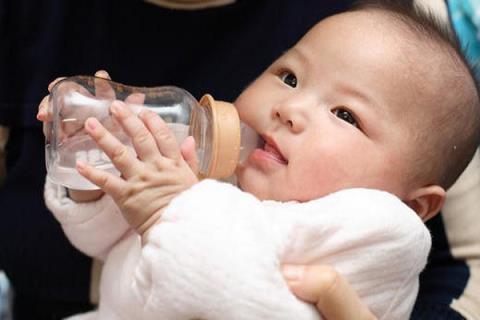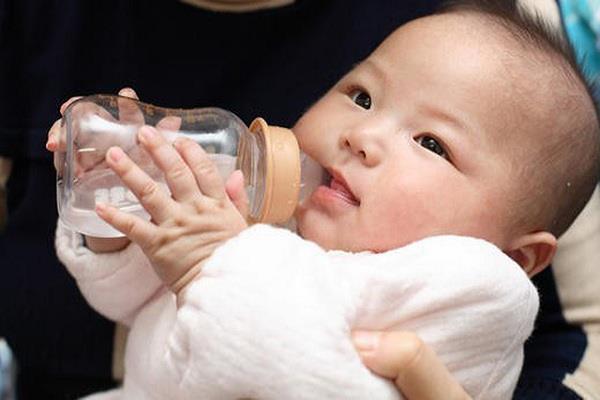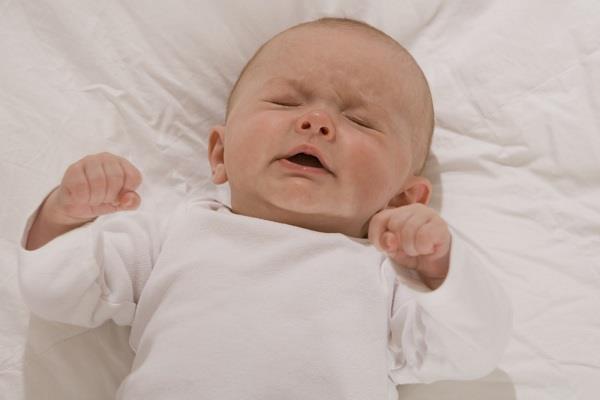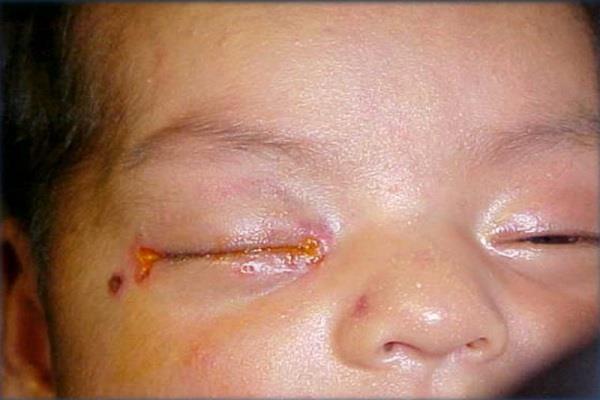Rolling eyes in children and what parents need to know

Rolling eyes in children is one of the problems that many parents worry about. Maybe it's because the parents don't know what it is, whether it's a symptom of any disease or not. However, in reality, this is just a normal phenomenon in young children. So why do children roll their eyes? And when do babies stop rolling their eyes? Will children's eyesight be affected by rolling their eyes? All will be answered by SignsSymptomsList through the following article.
content
- 1. Eye rolling phenomenon in children
- 2. When to pay attention to the problem of eye roll in children?
- 3. When to consult a doctor?
- 4. Causes of abnormal eye roll in children
1. Eye rolling phenomenon in children
Normally, the human eye will roll back and forth to reduce discomfort caused by dust entering the eye. It is a physiological reflex that pushes foreign objects out of the eye. For adults, rolling your eyes is a normal problem. However, rolling eyes in children makes many parents worried.
Most children roll their eyes during sleep for a variety of reasons. After birth, the baby's body is not fully developed. And it takes a while for those organs to function properly as adults.
Like other organs in the body, the visual structure of the baby after birth is not really complete. This is associated with the child's very immature vision and ability to control eye muscles. That's why eye roll occurs in children .
See also: Kawasaki disease: Definition – Causes – Symptoms
Normally, parents will see their baby roll their eyes when they are sleepy or when they first wake up. If detecting eye roll in children , parents should not be too worried. As the child grows older, this condition will gradually decrease over time. Even if you see the child rolling his eyes up is also a normal physiological phenomenon.
2. When to pay attention to the problem of eye roll in children?
If your baby rolls her eyes a lot because of limited control over her eye muscles, she usually doesn't have any other symptoms. However, if rolling your eyes is a warning sign of a medical condition, you'll find your baby is accompanied by other symptoms such as:
- Convulsion.
- Shortness of breath, irregular breathing.
- Trembling.
- Cyanosis or change in skin color.
- Crying.
- Poor suckling or skipping.
- Vomiting.
- Presence of pus in the eye.
- Red eyes, lots of tears…
At this time, parents should take the child to a medical facility with a pediatric specialty immediately. Because those symptoms warn of a certain disease of the child.

Poor suckling is a warning sign of danger.
In case the parents see the baby rolling his eyes with seizure-like symptoms. May include:
- Leg stiffness.
- Convulsion.
- Crying continuously.
- Trembling body movements…
At that time, parents need to ensure the safety of their children. Seizures in children can lead to complicated medical conditions. In addition, convulsions can occur when the baby has a high fever, severe infection, hypocalcemia, low blood sugar, etc.
If your baby has a seizure, it is best to have him or her lie on the floor. Then, take off all your baby's tight clothing. Take your baby to the doctor right away to find out what's causing the seizure.

Seizures in children.
3. When to consult a doctor?
As a parent, you need to observe your baby carefully to be able to accurately determine if the baby's eye roll is normal. Or due to an underlying medical condition. The goal is to get medical attention in a timely manner.
This helps parents to prevent the occurrence of worse developments. As well as limit the severity of the disease. To determine specifically, parents should keep a diary to monitor the child's eye movements.

Parents should keep a diary of eye roll in children.
Along with the phenomenon of rolling eyes are accompanying symptoms in the baby, if any. As well as the time, the time period often occurs the phenomenon of eye roll in children . If you see any unusual developments, you should take your child to the doctor immediately.
4. Causes of abnormal eye roll in children
The following are some diseases that can cause eye roll in children along with symptoms of the disease:
Extraocular diseases
- Head injury due to falls, falling objects hit the head.
- Childhood epilepsy.
- Seizures due to high fever.
- Blood infection, severe inflammation.
- Hypoglycemia.
- Electrolyte disturbances such as: hyponatremia, hypocalcemia, hypomagnesemia, hypokalemia, etc.
- Increased intracranial pressure.
- Central nervous system infections such as encephalitis, meningitis, brain abscess, etc.
- Convulsions due to poisoning.
- Brain tumors.

Encephalitis in children.
Eye problems that can cause rolling eyes in children include:
- Dust, foreign objects, fur, etc. get into the eyes.
- Bacterial and viral conjunctivitis. For example: pink eye (closed eye), trachoma.
- Spring conjunctivitis.
- Allergy to milk, food causes swelling of the eye mucosa.
- Congenital refractive error. The most common are nearsightedness and astigmatism.
- Corneal ulcers (less common).
- Conjunctivitis caused by gonorrhea bacteria (transmitted from mother to mother), ...

Conjunctivitis in children due to gonorrhea bacteria.
In short, most cases of eye roll in children are normal. However, parents should not be subjective. If you find that your baby's eyes are rolling along with other strange and unusual symptoms, you should take your child to a medical facility right away!
Dr. Nguyen Lam Giang